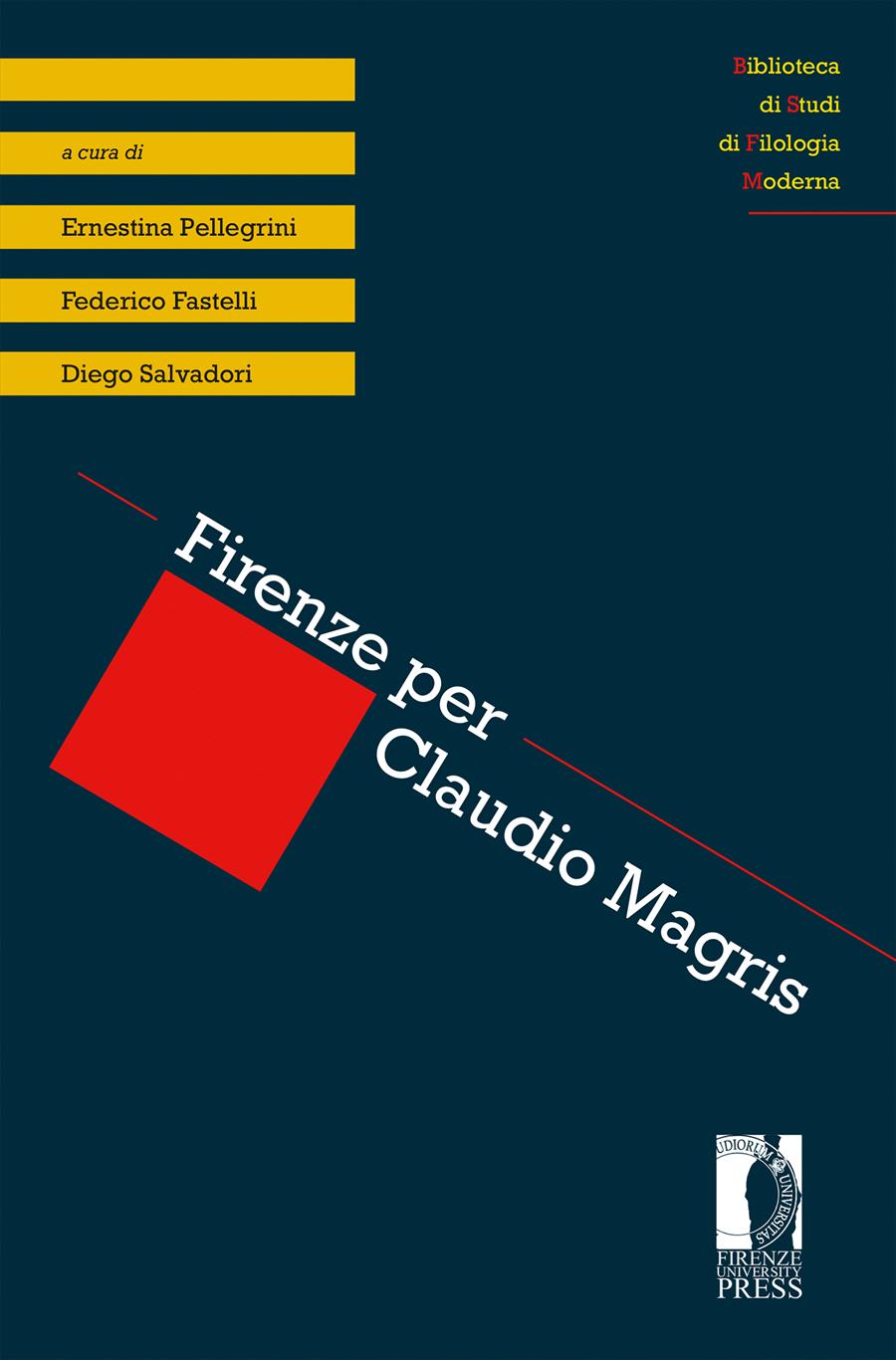- Firenze per Claudio Magris
- Edited by Ernestina Pellegrini, Federico Fastelli, Diego Salvadori
«Il cybernauta è naufragato». Rappresentazioni del tecnologico nell’opera di Claudio Magris
- Simone Rebora
- © 2021 Author(s) |
- CC BY 4.0
- DOI: 10.36253/978-88-5518-338-3.25
This essay traces and analyses the various representations of technology in Claudio Magris’ work. From the answering machines of Le voci to the war machines of Non luogo a procedere, a controversial and conflicting relationship has always been established between the protagonists of Magris’ narratives and the various declinations of technological progress. The essay explores the concepts of cognitive sciences and digital humanities (such as the “extended mind” and word embeddings), while also referring to Magris’ own reflections on writing and figureheads, to illustrate the profoundly ethical value of the relationship established between human beings and the tools that they create.
- Keywords:
- Claudio Magris,
- Cognitive Science,
- Digital Humanities,
- Technology,
University of Verona, Italy - ORCID: 0000-0002-1501-3774
- Bolter Jay D., and Richard Grusin. 2000 (1998). Remediation. Understanding New Media. Cambridge: MIT Press.
- Buduma Nikhil, and Nicholas Locascio. 2017. Fundamentals of Deep Learning. Designing Next-Generation Machine Intelligence Algorithms. Sevastopol: O’Reilly Media.
- Castellucci, Paola. 2009. Dall’ipertesto al Web. Storia culturale dell’informatica. Bari: Gius. Laterza & Figli.
- Ciotti, Fabio. 2017. “Modelli e metodi computazionali per la critica letteraria: lo stato dell’arte.” in L’Italianistica oggi. Ricerca e didattica. Atti del XIX Congresso dell’ADI, Associazione degli Italianisti, Roma, 9-12 settembre 2015, a cura di Beatrice Alfonzetti, et al., 1-11. Roma: Adi Editore <https://www.italianisti.it/pubblicazioni/atti-di-congresso/laitalianistica-oggi-ricerca-e-didattica/Ciotti.pdf> (03/2021).
- Chalmers David J., and Andy Clark. 1998. “The Extended Mind.” Analysis 58, 1: 7-19.
- Chen Kai, et al. 2013. “Distributed Representations of Words and Phrases and Their Compositionality.” ArXiv: 1-9 <https://arxiv.org/pdf/1310.4546.pdf> (03/2021).
- Clark, Andy. 2011 (2008). Supersizing the Mind. Embodiment, Action, and Cognitive Extension. Oxford: Oxford University Press.
- Firth, John R. 1957. Papers in Linguistics, 1934-1951. London: Oxford University Press.
- Gramigna, Giuliano. 1995. “Magris, concerto per voci senza corpo.” Corriere della Sera 18 febbraio, 1995.
- Heller, Franca. 1995. “Le voci.” Il Mattino dell’Alto Adige 27 maggio, 1995.
- Lenci, Alessandro. 2008. “Distributional semantics in linguistic and cognitive research.” Italian Journal of Linguistics 20, 1: 1-31 <http://linguistica.sns.it/RdL/20.1/ALenci.pdf> (03/2021).
- Magris, Claudio. 2012 (1993). “Le voci.” In Claudio Magris, Opere, a cura, e uno scritto introduttivo di Ernestina Pellegrini e con uno scritto di Maria Fancelli, vol. I, 1509-27. Milano: Mondadori.
- Magris, Claudio. 1999. Utopia e disincanto. Saggi 1974-1998. Milano: Garzanti.
- Magris, Claudio. 2005. Alla cieca. Milano: Garzanti.
- Magris, Claudio. 2015. Non luogo a procedere. Milano: Garzanti.
- Magris, Claudio. 2019. Polene. Occhi del mare. Milano: La nave di Teseo.
- Magris Claudio, e Mario Vargas Llosa. 2012. La letteratura è la mia vendetta. Milano: Mondadori.
- Moretti, Franco. 2013. Distant Reading. London: Verso.
- Ong, Walter J. 1986. “Writing Is a Technology that Restructures Thought.” In The Written Word. Literacy in Transition, edited by Gerd Baumann, 23-50. Oxford: Clarendon Press.
- Paternoster, Alfredo. 2012. “Ridimensionare la mente estesa.” Sistemi intelligenti 24, 1: 99-106.
- Pellegrini, Ernestina. 2003 (1997). Epica sull’acqua. L’opera letteraria di Claudio Magris. Bergamo: Moretti & Vitali.
- Pellegrini, Ernestina. 2012 (1993). “Notizie sui testi.” In Claudio Magris, Opere, a cura, e uno scritto introduttivo di Ernestina Pellegrini e con uno scritto di Maria Fancelli, vol. I, 1529-619. Milano: Mondadori.
- Pellegrini, Ernestina. 2012. “La via obliqua di Claudio Magris. Strategie e forme del racconto critico.” In La saggistica degli scrittori, a cura di Anna Dolfi, 279-301. Roma: Bulzoni.
- Pellegrini, Ernestina. 2015. “Non luogo a procedere di Claudio Magris.” LEA - Lingue e Letterature d’Oriente e d’Occidente 4: 589-97.
- Rebora, Simone. 2015. Claudio Magris. Fiesole: Cadmo.
- Rebora, Simone. 2016. “Rimediare la mente estesa. Una critica mediologica dell’ipotesi cognitivista.” In Rimediazioni. Immagini Interattive, a cura di Tiziana Migliore, vol. II, 297-308. Roma: Aracne.
- Schreibman Susan, Siemens Ray, and John Unsworth eds. 2016. A New Companion to Digital Humanities. Chichester: Wiley/Blackwell.
Chapter Information
Chapter Title
«Il cybernauta è naufragato». Rappresentazioni del tecnologico nell’opera di Claudio Magris
Authors
Simone Rebora
Language
Italian
DOI
10.36253/978-88-5518-338-3.25
Peer Reviewed
Publication Year
2021
Copyright Information
© 2021 Author(s)
Content License
Metadata License
Bibliographic Information
Book Title
Firenze per Claudio Magris
Editors
Ernestina Pellegrini, Federico Fastelli, Diego Salvadori
Peer Reviewed
Publication Year
2021
Copyright Information
© 2021 Author(s)
Content License
Metadata License
Publisher Name
Firenze University Press
DOI
10.36253/978-88-5518-338-3
eISBN (pdf)
978-88-5518-338-3
eISBN (xml)
978-88-5518-339-0
Series Title
Biblioteca di Studi di Filologia Moderna
Series E-ISSN
2420-8361
